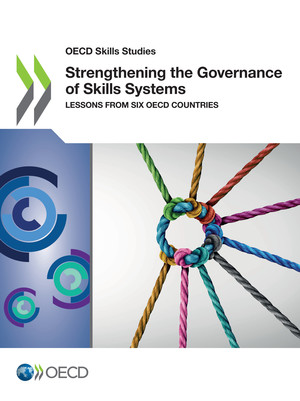copy the linklink copied!Executive summary
Building on the OECD Skills Strategy 2019, this report provides a comprehensive analysis of how the governance of skills systems can be strengthened. Broadly speaking, it finds that successful skills strategies depend on the continued collaboration between ministerial departments, agencies, non-governmental stakeholders and local actors across different levels of government. More specifically, it identifies four challenges that need to be met in order to strengthen skills systems:
-
Promote co-ordination, co-operation and collaboration across the whole of government.
-
Engage with stakeholders throughout the policy cycle.
-
Build integrated information systems.
-
Align and co-ordinate financing arrangements.
The bulk of the report is devoted to a series of case studies that showcase how different countries have responded to these challenges by promoting innovative solutions and new approaches in the governance of skills policies. Each case study focuses on a particular example of innovation rather than the skills system of the country as a whole. The cases are selected as representatives of different welfare state regimes and political economy models across the OECD.
copy the linklink copied!Overview of chapters
Chapter 1. Introduction and theoretical framework introduces the overall framework of the report, focusing on the four main challenges identified above. It also provides some background on the selection process of the case studies.
Chapter 2. Case Study: The Estonian Education Information System (EHIS) studies EHIS as an example of building integrated information systems. EHIS combines data on student achievement with information on teachers and school contexts. The data can be connected to information on labour market outcomes, allowing a fine-grained analysis of educational and employment trajectories.
Chapter 3. Case Study: The Alliance for Initial and Further Training in Germany highlights the benefits and challenges of policy co-ordination according to a “whole-of-government approach”. The Alliance for Initial and Further Training in its current form was established in 2014 and brings together a broad range of stakeholders such as ministerial departments, employer associations, trade unions and representatives of subnational (Länder) governments.
Chapter 4. Case Study: Lifelong learning in Korea introduces the local governance structure of lifelong learning in the Korean city of Suwon. The chapter documents how multiple stakeholders contribute and are involved in this system and how it is embedded in a multi-level governance structure of lifelong learning institutions that stretch to the provincial and national levels.
Chapter 5. Case Study: Norway’s Skills Policy Council and Future Skills Needs Committee demonstrates how in the Norwegian case, the Skills Policy Council, supported by the Future Skills Needs Committee, helps the government to develop a comprehensive skills strategy that builds on research of current skills needs. The Skills Policy Council shows how stakeholder involvement can be combined with building integrated information systems.
Chapter 6. Case Study: Portugal’s National Agency for Qualification and Vocational Education and Training (ANQEP) highlights successful institutional innovation against the background of significant fiscal constraints following the economic and fiscal crisis. Representing another example of stakeholder involvement, Portugal’s National Agency of Qualification and Vocational Education and Training brings together actors from different governmental ministries and non-governmental stakeholders. This case study reveals the importance of aligning and co-ordinating financing arrangements in a context of continued austerity.
Chapter 7. Case Study: Massachusetts’ (United States) Early Warning Indicator System (EWIS) complements the Estonian case study as a further example of how integrated information systems can be built up in the domain of educational governance. EWIS provides teachers, administrators and stakeholders with immediate feedback about potential students at risk of failing, allowing for swift remedial action.
Chapter 8. Conclusion and general policy recommendations provides a short summary of the main insights from the report, as well as general policy recommendations.
copy the linklink copied!Overall recommendations
Reflecting on the insights from the individual case studies, the concluding section provides a number of general policy recommendations for strengthening the governance of skills systems. More specifically, policy makers are advised to:
-
Establish co-ordinating committees with a meaningful mandate and clear internal governance structures in order to avoid overlap between the competing mandates of committees and agencies.
-
Promote the involvement and commitment of non-governmental stakeholders, but pay attention to the risk of undue influence of special interests. This will require careful and balanced decision making about which stakeholders to involve in joint decisions, and about how to build trust among the actors involved.
-
Support the establishment of information management systems, but ensure that they provide usable and relevant information to stakeholders and policy makers. This is more likely when stakeholders are allowed to provide input into the design of systems, and when systems rely on multiple sources of data, both quantitative and qualitative.
-
Invest and commit the diversified resources needed to strengthen skills policies in order to avoid underfunding newly established institutions and governance structures. Tap into multiple sources of public and private funding if available.
These recommendations are transformed into a practical self-assessment tool that allows policy makers and stakeholders to evaluate the overall potential of their country and strengthen the governance of its skills policy regime.
Metadata, Legal and Rights
https://doi.org/10.1787/3a4bb6ea-en
© OECD 2020
The use of this work, whether digital or print, is governed by the Terms and Conditions to be found at http://www.oecd.org/termsandconditions.


